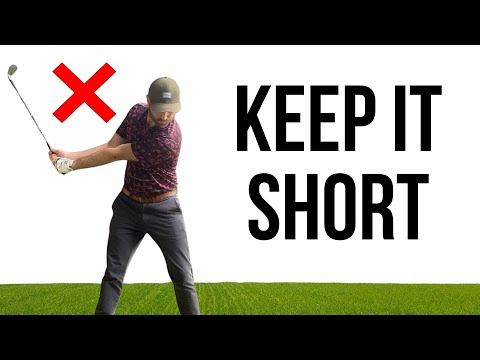In this video I go over the fundamentals for hitting fairway bunker shots, and also explain bump and run chip shots.
The polar opposite of hitting from a mat is practicing from a fairway bunker. While hitting from a mat will fool you into thinking fat shots aren’t so fat, hitting from a fairway bunker will create no such illusion. You must hit this shot completely clean, with perfect ball-first contact.
Fractionally narrow your stance so that you stand tall— perhaps about an inch narrower than normal. Definitely don’t widen your stance in an effort to gain stability. You need to stand tall to provide clearance for your club.
Choking down will also help provide clearance for your club. This may slightly reduce your club head speed, but speed will do you no good without clean contact, which is crucial here.
Dig your feet into the sand at an inward slant, to give you a solid stance. Although digging your feet in flat will help, adding the extra angle will provide much more traction.
Initiate your backswing by rotating your hips and shoulders to get the club moving, while keeping your head still. This will help keep you on plane and well-balanced, thereby setting you up for a clean strike. Don’t rush the backswing. Even if you feel as though you look like Sungjae Im, it’s more likely that your backswing is moving much quicker than it feels; film yourself to verify this. Be patient and allow yourself to complete the backswing. A good check is to let your shoulder hit your chin. A full backswing is needed to provide smooth power in your downswing, without throwing off your balance. Do not try to make a bigger backswing than you would in the fairway, but don’t short yourself either. If you make too small of a backswing, you’ll be subconsciously tempted to get too snappy in your transition. If you’re getting too quick in transition, a good timing thought is “rotate (backswing), pause (transition), swing!” Exaggeration is the key to swing changes, because the reality is always less than the feeling, so even if you feel like your pause is exaggerated, it’s probably not. Pausing when your shoulder hits your chin will allow your wrist set to maximize, because the club will keep moving back via its momentum.
Now you’re ready for a smooth, powerful downswing. Ensure that your weight moves to your front foot as you transition into the downswing, to aide good contact. Finally, keep your head down through impact and look for the spot where the ball sat, before looking up and watching your ball fly like a rocket.
Bump and run shots are useful when an elevated green slants away from you, but you don’t feel confident lobbing the ball. You use the upslope to kill most of the ball’s momentum (the ball “bumps” into the upslope), so that it trickles onto the green with just enough pace to reach the pin.
Read the green carefully, then pick a landing spot on the upslope that will allow for the right amount of break as the ball “runs” toward the hole. Look for something distinctive on or near that landing spot, such as a patch of different-colored grass, and line up using that irregularity as a reference point. Although your goal with this tricky shot is to simply get the ball close to the hole, hitting the landing spot will require precision. You can practice this anywhere by placing a washcloth on the ground, and trying to land balls on it.
Use a club with just enough loft to carry the ball to the landing spot with enough speed to reach the pin after bumping into the upslope. In my video examples I use an 8-iron, and for most instances, a club somewhere between a PW and a 6-iron will work best. Be sure to use a low enough loft to prevent clearing over the upslope.
I hope this helps you lower your scores and have more fun. Thanks for watching!






